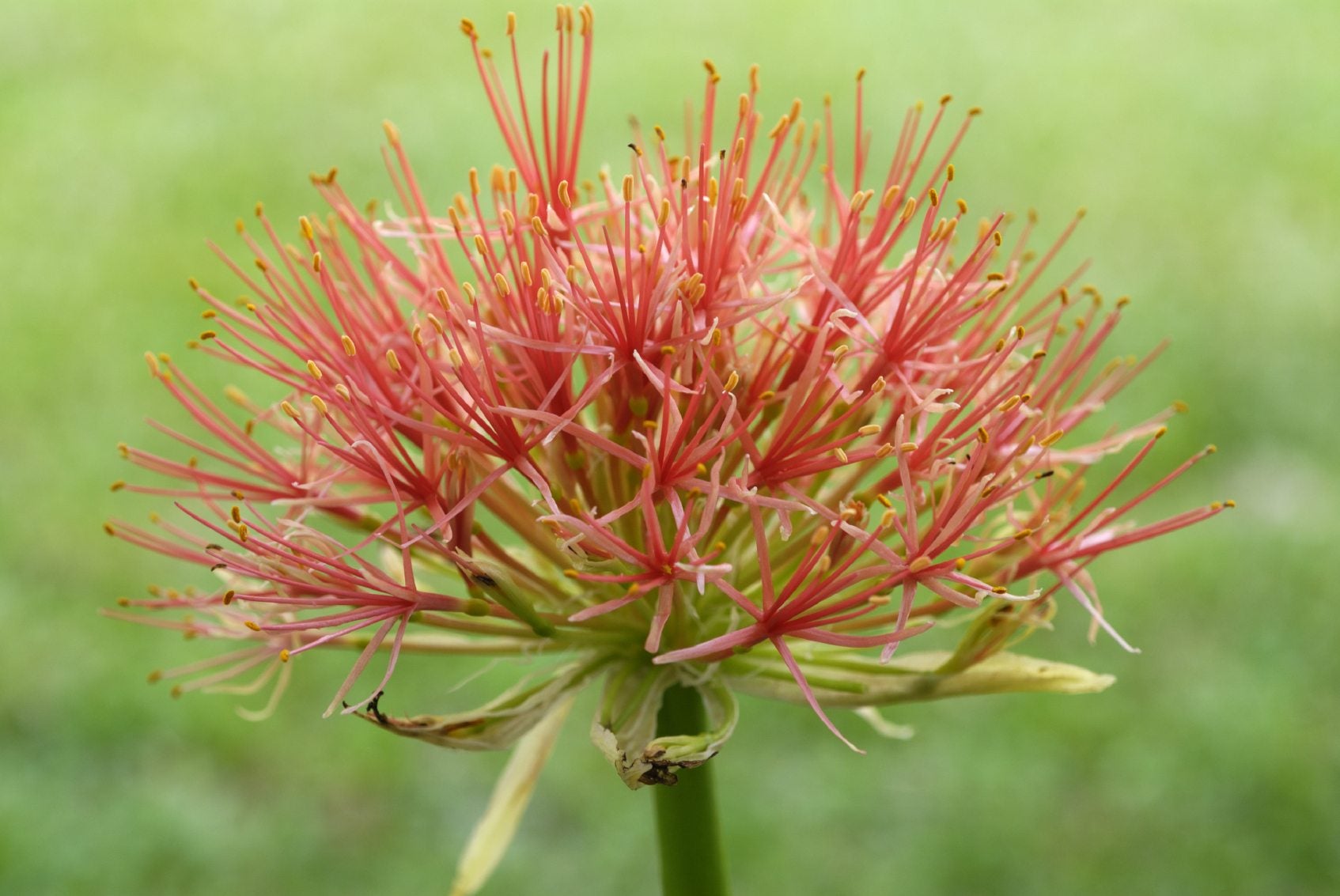Blood Lily Care: How To Grow An African Blood Lily Plant


Native to South Africa, the African blood lily (Scadoxus puniceus), also known as the snake lily plant, is an exotic, tropical perennial. This plant produces reddish orange globes of pincushion-like blooms in late spring and early summer. The flashy, 10 inch (25 cm.) blooms make the plant a real showstopper. Read on to learn about growing African blood lilies in your garden.
How to Grow an African Blood Lily
Growing African blood lilies outdoors is possible only in the warm climates of USDA plant hardiness zones 9 through 12. Plant blood lily bulbs with the necks even with, or slightly above, the surface of the soil. If your soil is poor, dig in a few inches (8 cm.) of compost or manure, as blood lily bulbs need rich, well-drained soil. The plant thrives in either partial shade or full sunlight.
Growing African Blood Lilies in Cool Climates
If you live north of USDA zone 9 and you have your heart set on growing this spectacular flower, dig the bulbs before the first frost in autumn. Pack them in peat moss and store them where temperatures remain between 50 and 60 degrees F. (10-15 C.) Replant the bulbs outdoors when you’re sure all danger of frost has passed in spring. You can also grow snake lily plants in containers. Bring the container indoors when nighttime temperatures fall below 55 degrees F. (13 C.). Let the leaves dry out and don’t water until spring.
African Blood Lily Care
Water African blood lily regularly throughout the growing system. This plant does best when the ground is consistently moist, but never soggy. Gradually reduce watering and allow the foliage to die down in late summer. When the plant goes dormant, withhold water until spring. Feed the plant once or twice during the growing season. Use a light application of any balanced garden fertilizer. A Note of Caution: Use care when growing African blood lilies if you have pets or small children. They may be attracted to the colorful flowers, and the plants are mildly toxic. Ingesting the plants may result in nausea, vomiting, diarrhea, and excessive salivation.
Gardening tips, videos, info and more delivered right to your inbox!
Sign up for the Gardening Know How newsletter today and receive a free copy of our e-book "How to Grow Delicious Tomatoes".

A Credentialed Garden Writer, Mary H. Dyer was with Gardening Know How in the very beginning, publishing articles as early as 2007.
-
 Moody Blooms For Spring: 8 Types Of Black Flowers To Add Drama To Spring Displays
Moody Blooms For Spring: 8 Types Of Black Flowers To Add Drama To Spring DisplaysFrom midnight burgundies to inky violets, several types of black flowers can enrich and embolden a spring display. Try these brooding bloomers for a moody garden
By Tonya Barnett
-
 Can Snake Plants Live Outside? Everything You Need To Know For Snake Plants Al Fresco
Can Snake Plants Live Outside? Everything You Need To Know For Snake Plants Al FrescoSnake plants can live outside given the right conditions, but be careful that they don't take over! Learn the best way to use snake plants in your landscape.
By Mary Ellen Ellis